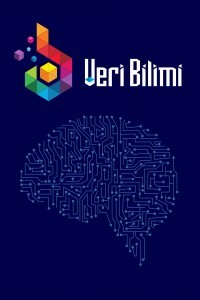Tıp Eğitiminde CPR Mankenlerinin Yapay Zeka Sınıflandırıcı ile Dijital Dönüşümü
CPR Manikin, ANN, Digital Transformation, Classifier, Medicine
Digital Transformation of CPR Mannequins in Medical Education with Artificial Intelligence Classifier
CPR Manikin, ANN, Digital Transformation, Classifier, Medicine,
___
- https://sorgundh.saglik.gov.tr/TR,260227/cpr-yasam-destegi-egitimi.html, (Visited Date: 18.04.2021)
- American Heart Association. Part 4: Adult basic life support: American Heart Association guidelines for cardiopulmonary resuscitation and emergency cardiovascular care. Circulation, 112(Supplement): IV–20–IV–34, 2005 K. Elissa, “Title of paper if known,” unpublished.
- Fisher JM. The resuscitation greats. The earliest records. Resuscitation 2000; 4:79-80.
- https://www.tkd.org.tr/ileri-kardiyak-yasam-destegi kursu/sayfa/CPR_ECC, (Visited Date: 26.03.2021).
- https://www.resusitasyon.com/yetiskinlerde-temel-yasam-destegi-cpr-kalp-masaji-uygulamalari/, (Visited Date: 22.03.2021)
- https://www.themt.co/blog/110-elektronik/344-nodemcu-bir-seyleri-wifi-ile-kolayca-baglayin, (Visited Date: 18.03.2021)
- https://www.esit.com.tr/tr/yuk_hucresi_loadcell__nedir_nasil_calisir/blog/3, (Visited Date: 21.02.2021)
- https://www.brainy-bits.com/load-cell-and-hx711-with-arduino/, (Visited Date: 12.03.2021)
- https://maker.robotistan.com/kategori/arduino/, (Visited Date: 19.02.2021)
- https://www.instructables.com/id/Tutorial-to-Interface-HX711-With-Load-Cell-Straigh/, (Visited date: 21.03.2021)
- K. B. Arbogast, M. R. Maltese, V. M. Nadkarni, P. A. Steen, and J. B. Nysaether. Anterior-posterior thoracic force-deflection characteristics measured during cardiopulmonary resuscitation: Comparison to post- mortem human subject data. Stapp Car Crash Journal, 50:131–145, November 2006.
- K. G. Gruben, A. D. Guerci, H. R. Halperin, A. S. Popel, and J. E. Tsit- lik. Sternal force-displacement relationship during cardiopulmonary resuscitation. Journal of Biomechanical Engineering, 115(2):195– 201, 1993
- Başlangıç: 2018
- Yayıncı: Murat GÖK
İnsan Bağırsak Mikrobiyomunda Bakteri Kaynaklı İnsan Benzeri MikroRNA Tespiti
Aysenur SOYTURK PATAT, Özkan Ufuk NALBANTOĞLU
Yargıtay Kararlarının Suç Türlerine Göre Makine Öğrenmesi Yöntemleri İle Sınıflandırılması
Kural Tabanlı Sınıflandırma Algoritmalarının Karşılaştırılması
VREP uygulamasında A-star kullanılarak otonom park eden robot
Umut ÇELEBİ, Muhammad Umer KHAN, Mert Anıl DEMİRHAN
The Effect of Asynchronous Message Queues on the Communication of IoT Devices
Ahmet TOPRAK, Abdül Halim ZAİM, Feyzanur SAĞLAM TOPRAK
Anlık yakıt tüketiminin makine öğrenmesi ile tahmin edilerek iyileştirilmesi
Ahmet Teoman NASKALİ, Buğra ŞEN
Topluluk sınıflandırıcı kullanarak zararlı url tespiti
Kübra KÖKSAL, Buket DOĞAN, Zehra Aysun ALTIKARDEŞ
Twitter Üzerindeki Finansal Tweetlerin LSTM Sinir Ağı Algoritması ile Duygu Analizi
Hakan YUSUFOĞLU, Hakan AYDIN, Ali ÇETİNKAYA
Tıp Eğitiminde CPR Mankenlerinin Yapay Zeka Sınıflandırıcı ile Dijital Dönüşümü
Melih İNAL, Uğur YILDIZ, Selçuk ÖĞÜTCÜ, Murat PEKDEMİR, Taner ÜNLÜER, Cantekin ÇELİKHASI, Erdem AYÜZ, Enes IŞIK
Emir Ali KIVRAK, Bahadir KARASULU, Can SÖZBİR, Atakan TÜRKAY
